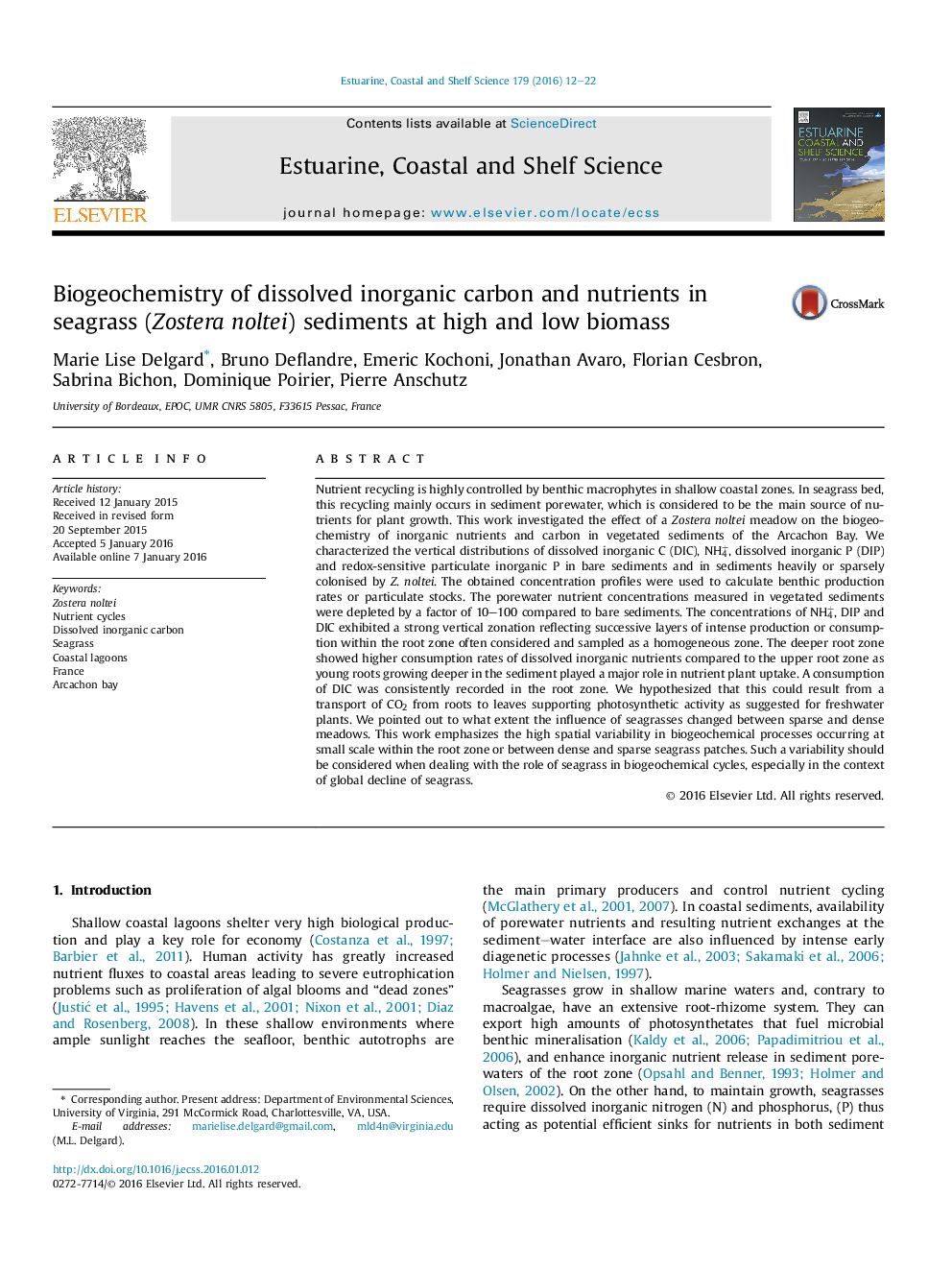| Article ID | Journal | Published Year | Pages | File Type |
|---|---|---|---|---|
| 4539189 | Estuarine, Coastal and Shelf Science | 2016 | 11 Pages |
•Profiles of NH4+, DIP and DIC showed a strong vertical zonation within the root zone.•Uptake of NH4+ and DIP were higher in the deeper than in the upper root zone.•A consumption of DIC in the root zone suggests a root-to-leaf transport of CO2.•Significant changes were observed between patches with low and high leaf biomass.•Small-scale spatial variability must be considered in threatened heterogeneous meadow.
Nutrient recycling is highly controlled by benthic macrophytes in shallow coastal zones. In seagrass bed, this recycling mainly occurs in sediment porewater, which is considered to be the main source of nutrients for plant growth. This work investigated the effect of a Zostera noltei meadow on the biogeochemistry of inorganic nutrients and carbon in vegetated sediments of the Arcachon Bay. We characterized the vertical distributions of dissolved inorganic C (DIC), NH4+, dissolved inorganic P (DIP) and redox-sensitive particulate inorganic P in bare sediments and in sediments heavily or sparsely colonised by Z. noltei. The obtained concentration profiles were used to calculate benthic production rates or particulate stocks. The porewater nutrient concentrations measured in vegetated sediments were depleted by a factor of 10–100 compared to bare sediments. The concentrations of NH4+, DIP and DIC exhibited a strong vertical zonation reflecting successive layers of intense production or consumption within the root zone often considered and sampled as a homogeneous zone. The deeper root zone showed higher consumption rates of dissolved inorganic nutrients compared to the upper root zone as young roots growing deeper in the sediment played a major role in nutrient plant uptake. A consumption of DIC was consistently recorded in the root zone. We hypothesized that this could result from a transport of CO2 from roots to leaves supporting photosynthetic activity as suggested for freshwater plants. We pointed out to what extent the influence of seagrasses changed between sparse and dense meadows. This work emphasizes the high spatial variability in biogeochemical processes occurring at small scale within the root zone or between dense and sparse seagrass patches. Such a variability should be considered when dealing with the role of seagrass in biogeochemical cycles, especially in the context of global decline of seagrass.
Graphical abstractFigure optionsDownload full-size imageDownload high-quality image (273 K)Download as PowerPoint slide
